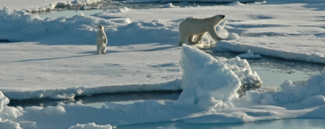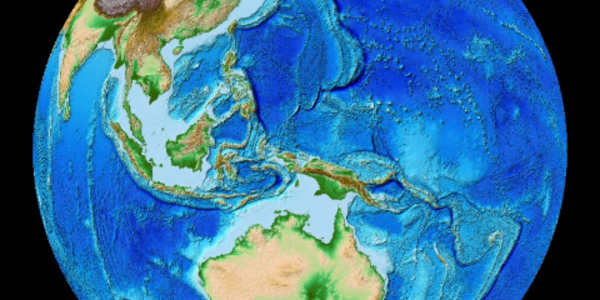Analysis shows the heatwaves are associated with warming climate

During summer months, regions around the world often experience heat waves. A heat wave over land surface is a period of above-normal hot weather lasting two or more days. But another kind of heat wave has the attention of scientists, one that occurs in the ocean.
"Prolonged Marine Heatwaves in the Arctic: 1982—2020," a recent paper lead-authored by NCEI scientists and published in Geophysical Research Letters, documents new evidence of a growing number of marine heatwaves in the Arctic Ocean, which are impacting the marine ecosystem.
Interpreting the Temperature Data
Scientists measure sea surface temperature (SST) either in situ (in the ocean) with buoys (moored or drifting) and ships or virtually through satellites. SST provides fundamental information on the global climate system. Periods of extremely warm SSTs are known as marine heatwaves (MHWs).
NCEI stewards the largest collection of SST data in the world and uses that data to create essential products for the study of marine environments. The authors of the study quantified MHWs using NCEI’s NOAA Daily Optimum Interpolation Sea Surface Temperature (DOISST) v2.1. For the purposes of the paper, the MHWs were defined based on specific criteria including SSTs warmer than both the 95th percentile climatological value over 1982–2011 and the long-term summer average, which were sustained for at least five consecutive days.
Past MHW research has focused on the Pacific, Atlantic, and Indian oceans. In this study, the authors documented the existence of strong, sustained MHWs in the Arctic region.
Strong, Extensive, Damaging Marine Heatwaves
This study shows that the MHWs in the Arctic are as strong as or even stronger than those in the other ocean basins. The study also correlated the SST data with air temperature data, indicating stronger MHWs in recent decades corresponding to Earth's warming climate. The analysis showed an increase in the intensity, duration, frequency, and area coverage of MHWs in the Arctic during 1982–2020. The MHW season in the Arctic has lengthened by approximately 28 days in the past two decades and now lasts until mid-September, when the season had previously ended in mid-August.
Prior studies of MHWs in other ocean basins showed substantial impacts on marine ecosystems throughout the entire food chain, from plankton to marine mammals. As the Arctic region continues to warm more than twice as fast as the rest of the globe, these MHWs may have a similarly strong impact on the Arctic ecosystem, the authors wrote.
The abstract for this scientific paper is available online. To read the paper in its entirety, please contact your local public library or university to place an interlibrary loan request.
Reference: Huang, Boyin, Z. Wang, X. Yin, A. Arguez, G. Graham, C. Liu, T. Smith, and H‐M. Zhang. "Prolonged Marine Heatwaves in the Arctic: 1982−2020." Geophysical Research Letters 48, no. 24 (December 2021): e2021GL095590. https://doi.org/10.1029/2021GL095590.



